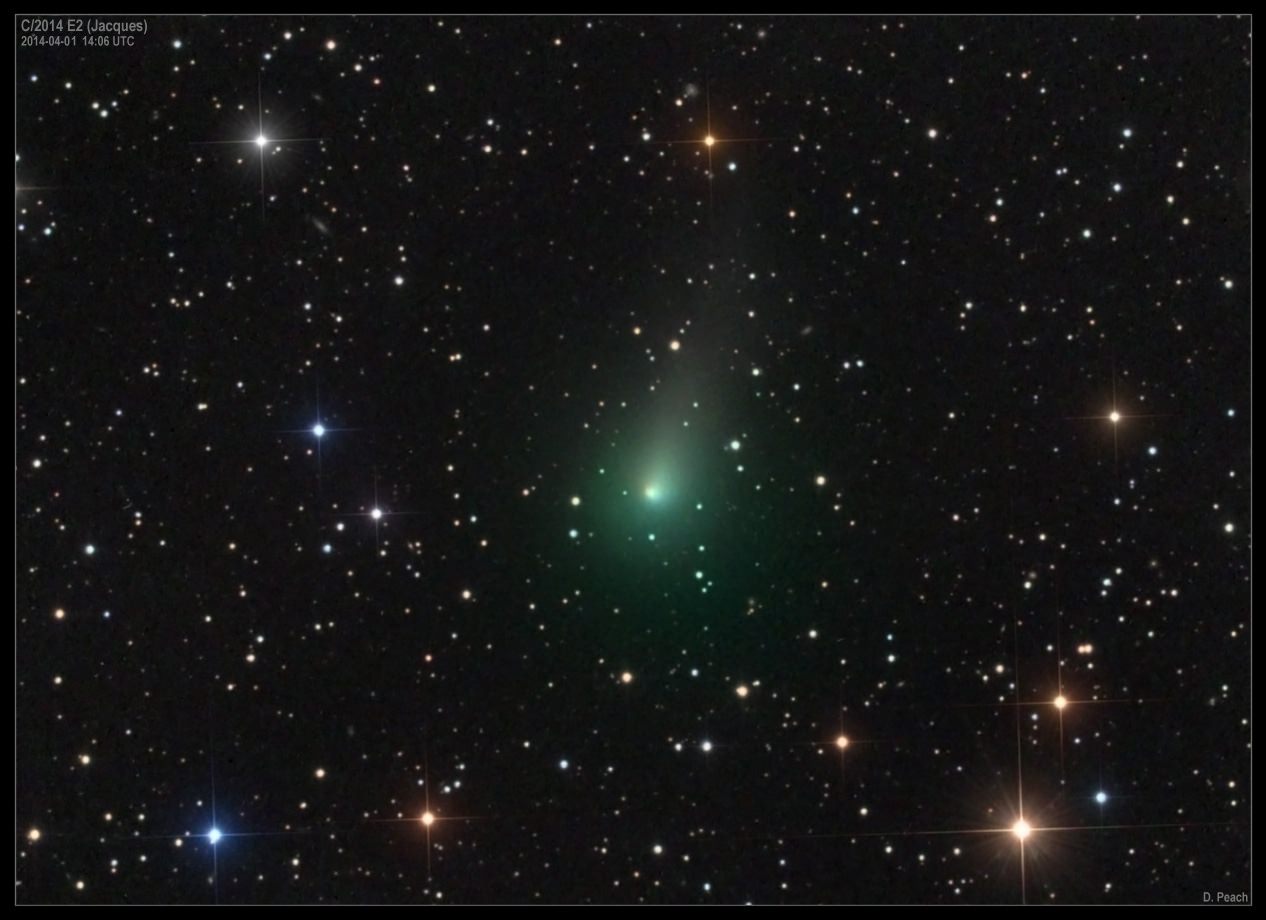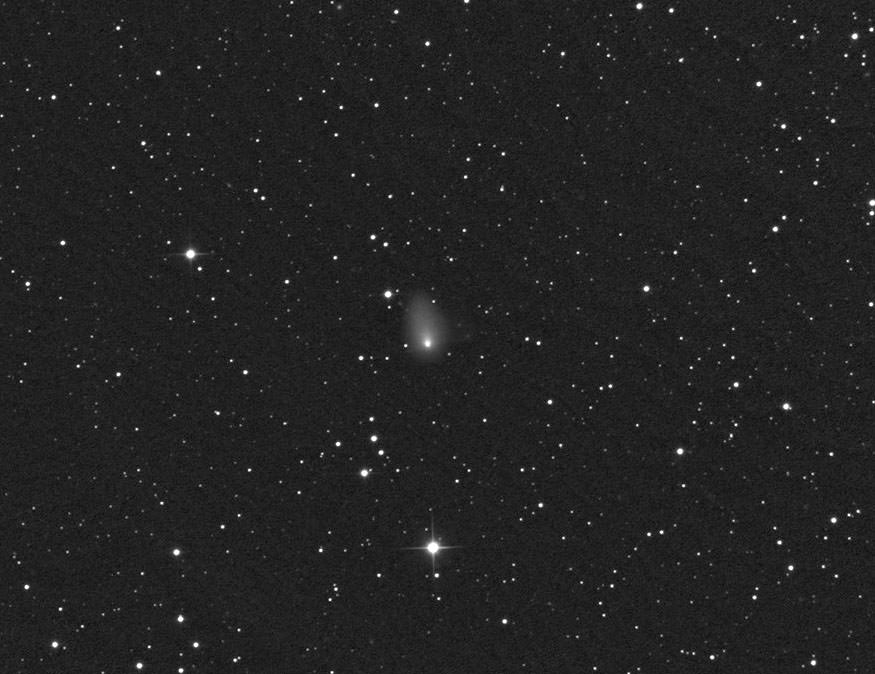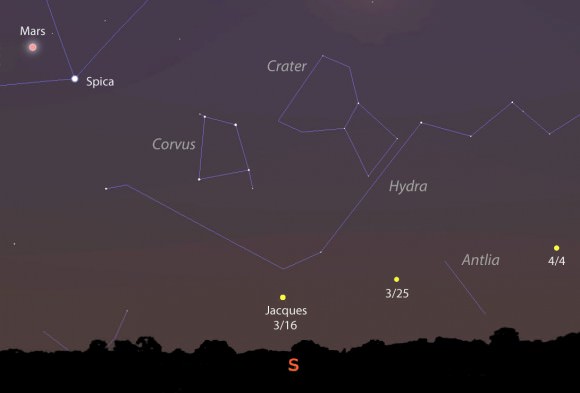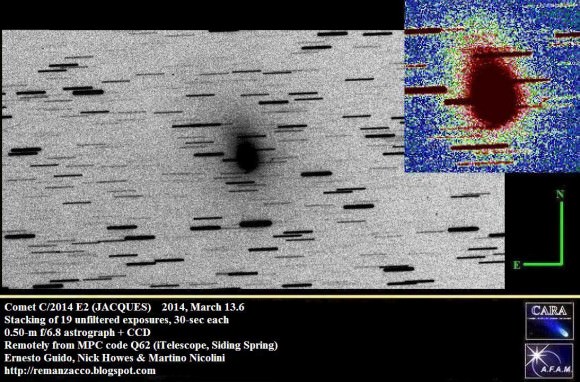We’ve got a hot comet on our hands. Comet Jacques barely cracked magnitude +11 at the time of its March 13 discovery, but just three weeks later, amateur astronomers have already spotted it in large binoculars at magnitude +9.5. Expert comet observer Michael Mattiazzo, who maintains the Southern Comets Homepage, predicts that if Comet Jacques continues its rapid rise in brightness, it might become faintly visible with the naked eye by July.

The comet’s currently inching across the southern constellation Antlia headed toward Puppis and Monoceros later this month. Observers describe it as “very diffuse” with a large, dim coma and moderately compact core. Photos show a short tail pointing east-northeast. This past weekend C/2014 E2 passed closest to the Earth at 89.3 million miles (144 million km) on its way to perihelion on July 2.
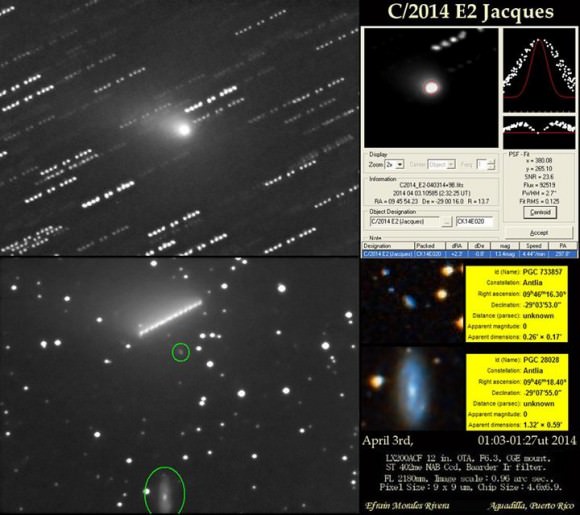
Right now, observers in southern latitudes have the viewing advantage. As seen from South America and Australia, Comet Jacques floats high in the southwestern sky at nightfall. Observers in mid-northern latitudes can see it too, but have to set their sights lower. A week ago I tried tracking down this newcomer with a 37-cm (15-inch) Dobsonian reflector around 9 o’clock. With Jacques only 14 degrees high at the time I had to kneel beside the telescope to see into the eyepiece. Try as I might, I suspected only a fuzzy patch at best. Light pollution and low altitude were partly to blame, but Jacques’ diffuse appearance may have contributed to the uncertain observation. Other mid-northern latitude observers may have shared my sore kneecap experience in similar attempts.
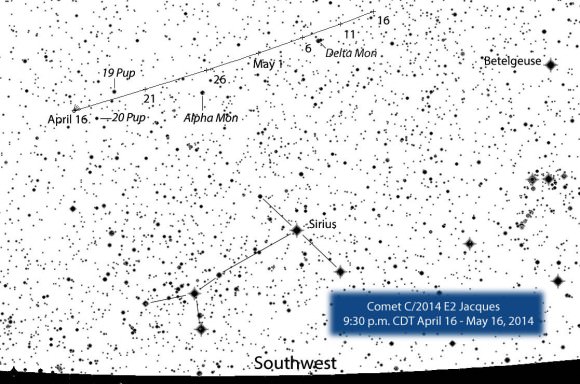
But that will soon change. C/2014 E2 continues to increase in altitude throughout the month, offering easier viewing as soon as mid-month. April 16 through early May the moon will be gone from the sky and provide a needed dark time slot for viewing the comet before it’s lost in evening twilight. Comet Jacques will likely be brighter than magnitude 9 as it slides from Puppis into Monoceros.
Find a place with a dark sky to the southwest and start looking at the end of evening twilight when the comet is highest. The map shows stars in reverse making it easier to use in crowded star fields.
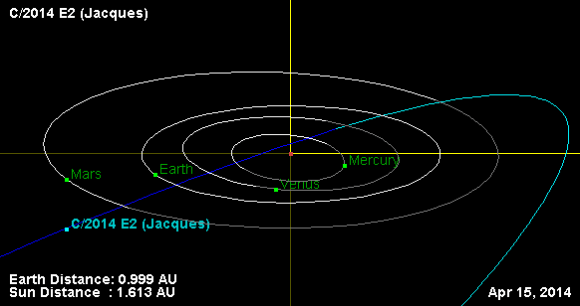
By mid-July, Comet Jacques will have passed perihelion 61 million miles (98 million km) from the sun and transition into the morning sky as it rapidly swings northward across Taurus, Auriga and Perseus. Though the comet will be half again as far from Earth as it is today, it’s expected to become considerably brighter and more condensed after a good “roasting” by the sun.
C/2012 E2 will join a veritable team of comets expected to reach or approach naked eye brightness in late summer and fall: C/2012 K1 PANSTARRS, C/2013 A1 Siding Spring and C/2013 V5 Oukaimeden. Much to look forward to!

